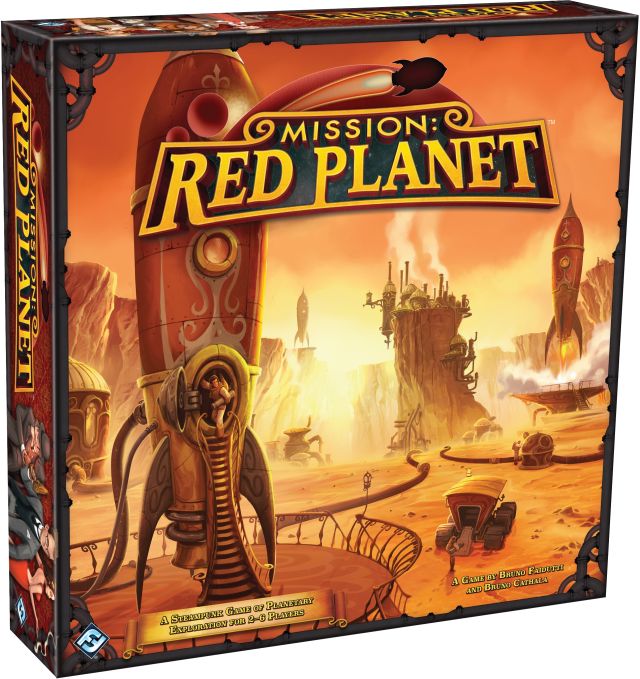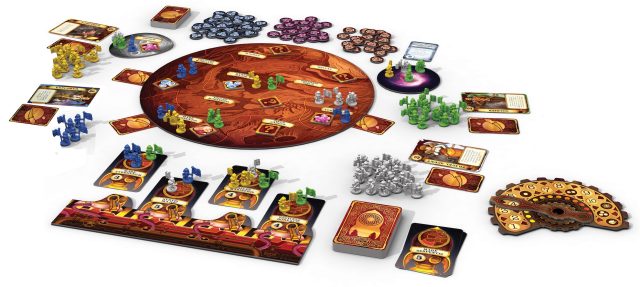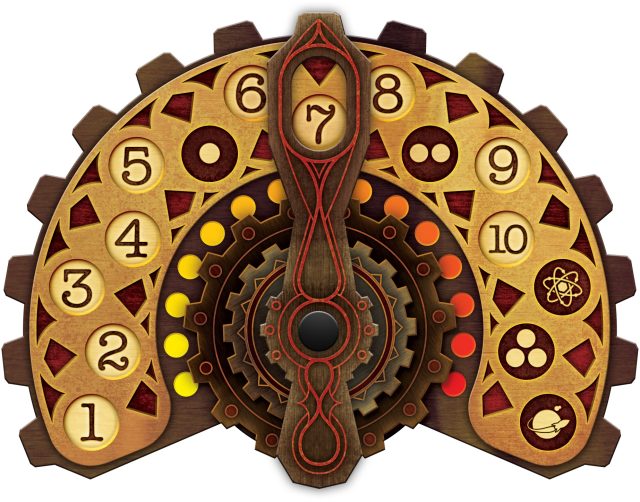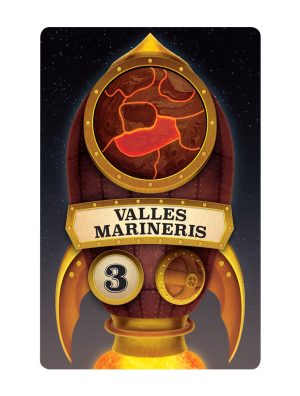
Admit it: you would secretly love to launch a private army to Mars. Luckily, Mission: Red Planet lets you do so as part of a steampunk Victorian mining conglomerate. Along the way, you'll sabotage the rockets carrying other astronauts, redirect opponents' ships to unimportant patches of Martian soil, take over Phobos, and just generally run riot in your quest to exploit the Red Planet's hidden resources.
To do this, each player gets nine role cards. The roles each grant a set of specific moves, such as placing three astronauts on the same docked rocket ("Travel Agent") or placing one astronaut in a rocket and then killing another player's astronaut on Mars and then moving three of your own astronauts down from Phobos onto the Red Planet itself ("Soldier"). Other roles let you destroy docked ships ("Saboteur"), force not-yet-full ships to launch early ("Secret Agent"), or change the destination of a rocket even in flight ("Pilot").
Once rocket ships are full—each holds a different number of astronauts and is destined for a different spot on Mars—they launch. At the end of a round, each launched ship dumps its cargo of astronauts at its listed destination and is replaced on the launch pad by a new rocket. On Mars, represented by a large red circle of a board assembled from four cardboard quadrants, the basic task is area control. Whichever player has the most astronauts in each Martian area takes the resources produced by that area. This happens three times a game with larger numbers of resources available on each new production round.
Simple enough, but the catch is that each player can only choose one role per round, they make that choice simultaneously with all other players, and they can't play that role again. Each role has a number, too, with lower-numbered roles coming later during play. You thus might find that the game landscape has already been changed by another player when your role comes up.
This leads to problems, such as when you want to load a rocket with three astronauts (using the Travel Agent, the number three card) but find that your annoying cousin Lara has just filled up the open rocket slots by placing two astronauts of her own and forcing a third, empty ship to launch (using the Secret Agent, the number six card). Deciding what to play is often premised on guessing what other people are likely to play in the current round.
Because the game only has nine roles but ten rounds, players must also burn at least one turn playing the "Recruiter"—the number nine role and the only one that lets you pick up all your previously played cards and put them back into your hand for re-use.

This requires strategy. Which roles are most essential to your preferred play style and when do you pick them up again? Do you pick up roles twice, burning two turns but giving you the chance to play only the "best" role cards? Or do you stretch your deck, finding the proper time to use each role's power?
And how do the roles mesh with the game's three "resource production" rounds at which you can find increasingly large caches of ore on the Martian surface? You certainly don't want to be playing the recruiter on the turn before the final (and largest) resource production round while your opponents subtly maneuver their astronauts across the Martian surface and dominate areas you had thought were safely yours.
The final wrinkle to all this rocket loading, land grabbing, and resource grubbing is the tiny deck of discovery, mission, and action cards (known collectively as "event cards"). You get one mission at game start and can acquire more cards by playing the Scientist role. Each card tweaks the game, providing more or less points for certain objectives or altering certain regions of Mars. (One event card even grants an endgame bonus for having the most dead astronauts.)
Some event cards can change the endgame dramatically; one allows you to take all astronauts still in docked ships at game end and move them to a specific Martian zone, potentially producing a terrific surprise to an opponent who had thought that zone was a lock.
At game end, resources are worth points. Add those points to any other points generated by mission objectives and discovery cards, and you have your winner—the most ruthless explorer and exploiter of the Martian surface. Could planetary strip mining get any more enjoyable?

Easy but not simple
Mission: Red Planet is a terrific game. Fast, fluid, and fun, it has enough choices to keep the mind engaged, enough movement to eliminate downtime, and enough class not to overstay its welcome. All four times I've played the game in the course of reviewing it, I felt tremendous endgame pressure because I desperately wanted just a few more rounds. (Contrast this with that dull and sinking feeling you get near the end of games that you just... want... to.... end.)
Mission: Red Planet first launched in 2005; the version reviewed here is Fantasy Flight's 2015 "second edition," which came out in October. The new version streamlines play and reimagines the artwork to tremendous effect (rather than wooden cubes, your astronauts are exceptionally detailed plastic spacemen, each carrying your flag, and the artwork on the cards is top notch).

This is one of those rare games that works well with kids and gamers alike; in fact, I'm not sure if my nine-year old or my gaming group enjoyed it more. It's a great mix of game-long strategy combined with "oh crap!" tactical maneuvering as you react to assassinations and sabotage, and it's a fine blend of mechanics (area control, hidden role selection, and resource collection). The game has plenty of player interaction and a moderate "take that" element—wonderful until your six-year old starts crying because you blew up her rocket mid-flight.
Mission: Red Planet doesn't really feel like a gateway game; don't bust this out at the end of a party with a group of non-gamers. And while it's a great "family game," don't think you need a family to enjoy it. To anyone versed in role selection and the idea of game-altering event cards, the game teaches quickly and plays easily, even on the first time through.
I chose this as one of my top games of 2015, which repeated plays have only confirmed. At 45 minutes long and with enough complexity to make it fun, Mission: Red Planet can scratch the itch for either a light or a medium game, and it doesn't produce that plodding mental sense of "I have to gear up for this!" that many heavier games provoke. That means it hits the table at our house far more often than some other titles, but if you value brain-burning strategy, depth of play, or novelty of mechanism, this may not satisfy.
The game does nothing new, but it is terrific fun. Mission: Red Planet is executed superbly, with a new layer of polish provided by the second edition. It's a nearly perfect blend of its elements.
reader comments
12